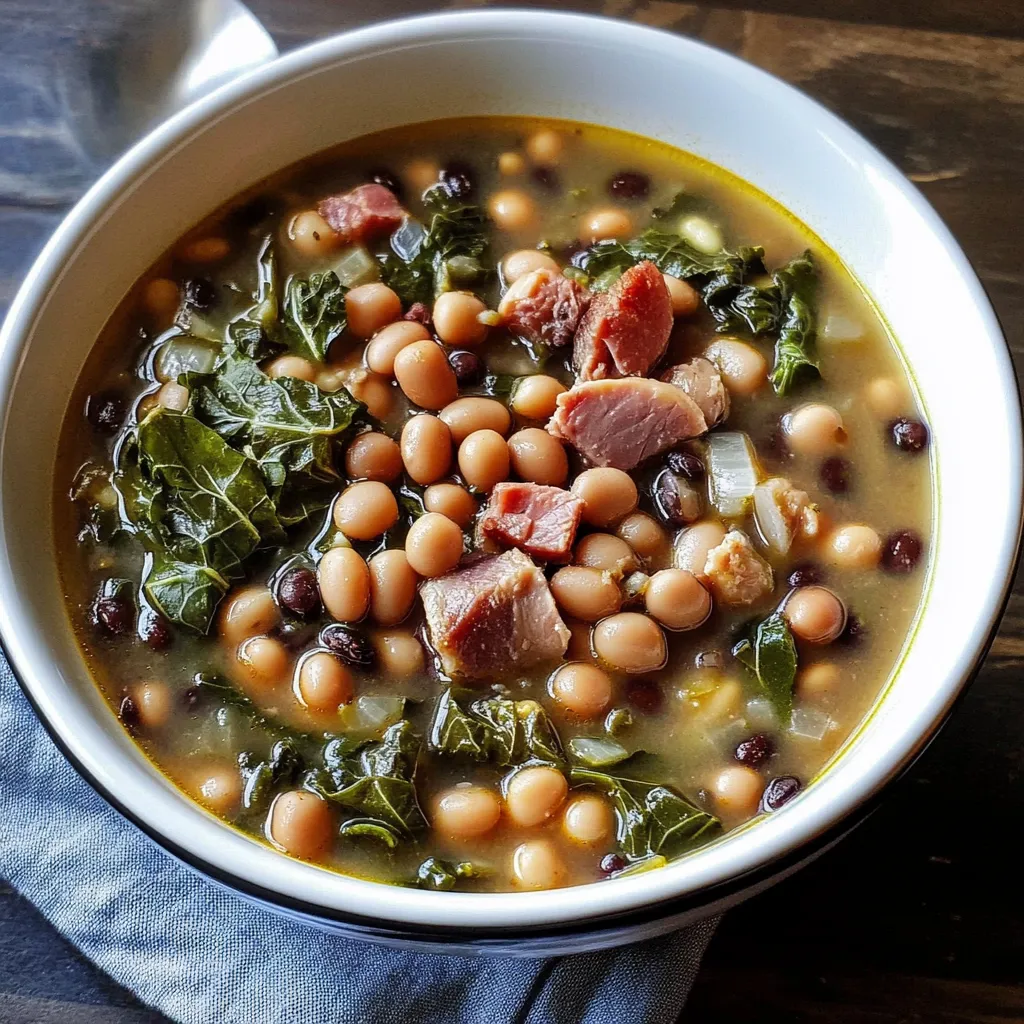 Pin it
Pin it
The smell of black eyed peas and collard greens simmering away takes me straight back to grandma's cooking. I've tweaked her method for the slow cooker, keeping all those Southern flavors but making it way easier to pull off. It's perfect when you want that down-home taste but don't have time to stand over the stove all day.
I found out last winter that letting a ham bone slowly cook down makes the broth even tastier than my regular stovetop version. Something about the slow cooker's gentle heat really pulls out all the flavor, making each serving better than I remembered.
Key Ingredients
- Ham Bone: Try to get one with lots of meat still on it - this gives your dish that amazing rich flavor
- Black Eyed Peas: Pick ones that look plump and clean for the best texture when they cook up
- Collard Greens: Go for bunches with firm, dark leaves that aren't yellowing - they'll hold up better during cooking
- Wild Rice: The chewiness and nutty taste works perfectly with the soft peas
- Chicken Stock: Make your own if you can, or buy good quality low-salt versions so you can control the saltiness
- Apple Cider Vinegar: Just a tiny bit cuts through the richness and helps soften those greens
- Onion and Garlic: Always use fresh ones - you'll definitely taste the difference
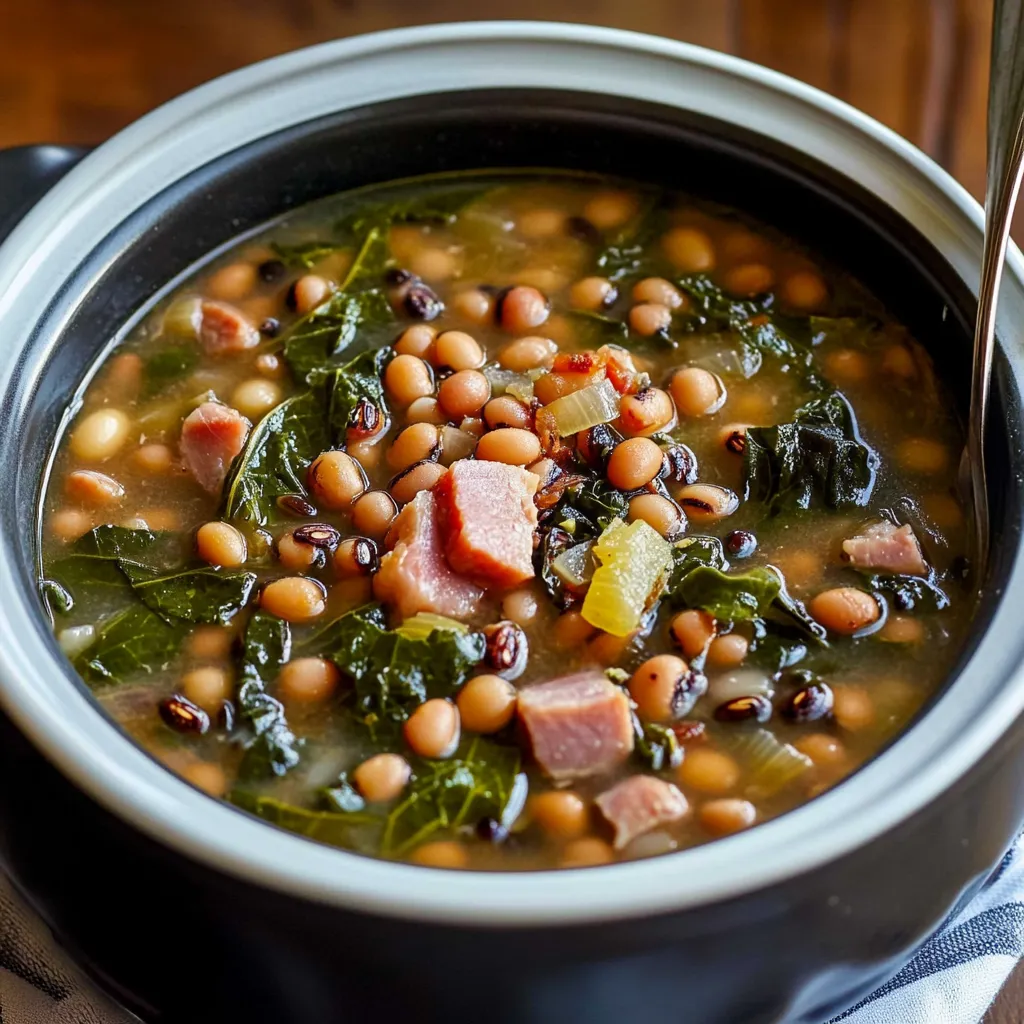 Pin it
Pin it
Step-By-Step Guide
- Getting Ready (15 minutes):
- Sort through your black eyed peas and throw out any bad ones or little rocks. Wash them until the water runs clear. Cut the tough stems off your collards and chop the leaves into roughly 2-inch pieces. Cut your onion into even pieces and chop your garlic nice and small so the flavor spreads out. Make sure to put the ham bone right in the middle of the cooker for the best flavor.
- Building Flavor Layers (10 minutes):
- Start with the ham bone at the bottom of your slow cooker. Scatter your chopped onions and garlic around it. Pour chicken stock over everything, making sure it comes about an inch above the ingredients. Add your spices and tomato sauce. Give it a gentle stir without moving the ham bone too much.
- First Cooking Stage (2 hours):
- Throw in your black eyed peas and collard greens. Cover and cook on High until the peas start to soften. Don't keep checking it - every time you lift the lid, heat escapes. If you can, peek through the glass lid to check the liquid level.
- Adding Rice (3-4 hours):
- Turn the heat down to Low before adding your wild rice. Make sure the rice is covered by liquid. Keep cooking until the rice is done but still has a bit of bite to it. Check it now and then so the rice doesn't get mushy.
- Finishing Up (30-60 minutes):
- Carefully take out the ham bone with tongs. Pull off any meat while it's still warm. Put the meat back in the pot. Let everything hang out on Low heat so the flavors can really come together.
I learned from watching my mom that you can't rush this dish. She always told me, 'Just let the cooker do its thing - good food takes time.' After making this for years, I know she was right. Especially that ham bone - it needs plenty of time to work its magic and release all those deep flavors.
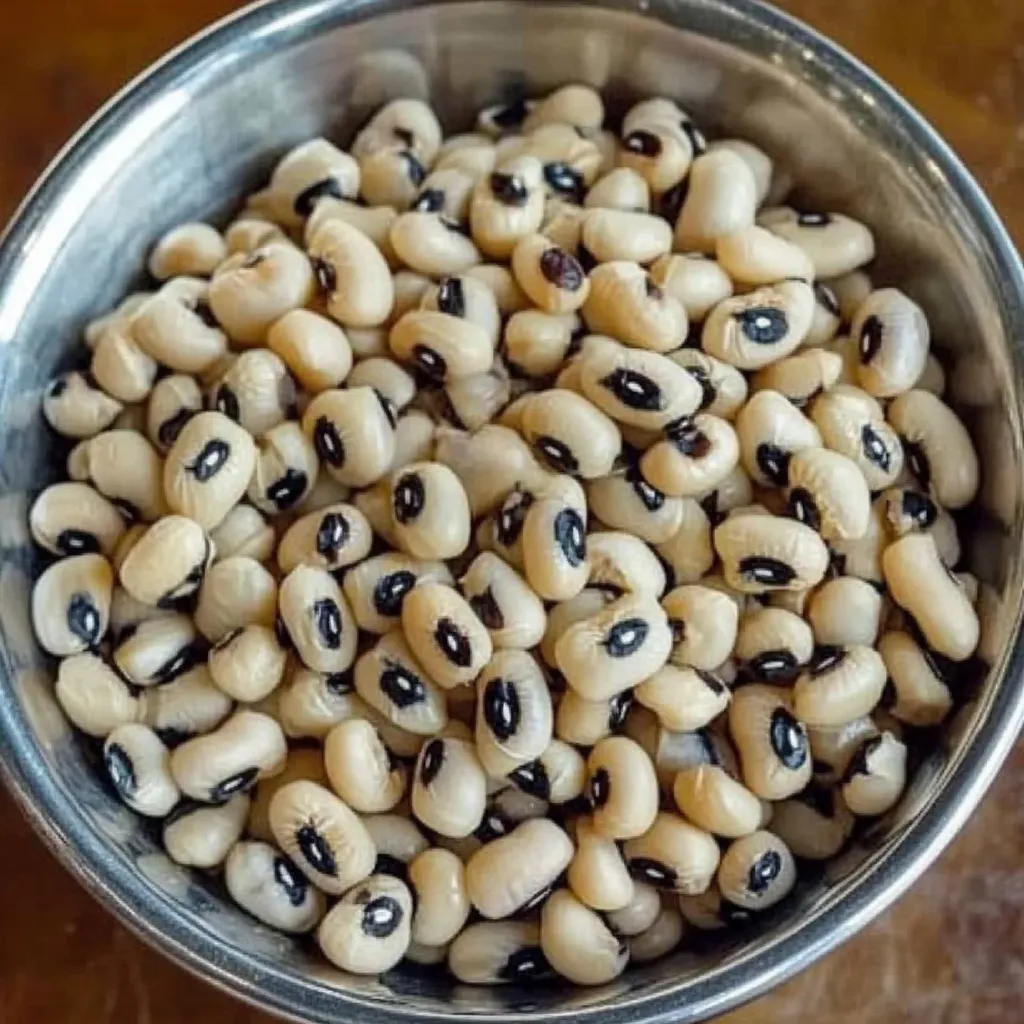 Pin it
Pin it
Controlling The Heat
You really need to get to know your slow cooker. They all cook a bit differently - some run pretty hot. The first time you make this, check how tender the peas are after about 90 minutes. If they're still pretty firm, you'll probably need the full 2 hours on High before turning it down.
Getting The Right Feel
Getting everything just right depends on how much liquid you've got. Your peas should be creamy but not falling apart, greens should be tender but not slimy, and the wild rice should be chewy without being hard. If things look dry while cooking, just add some hot stock to keep it all nice and moist.
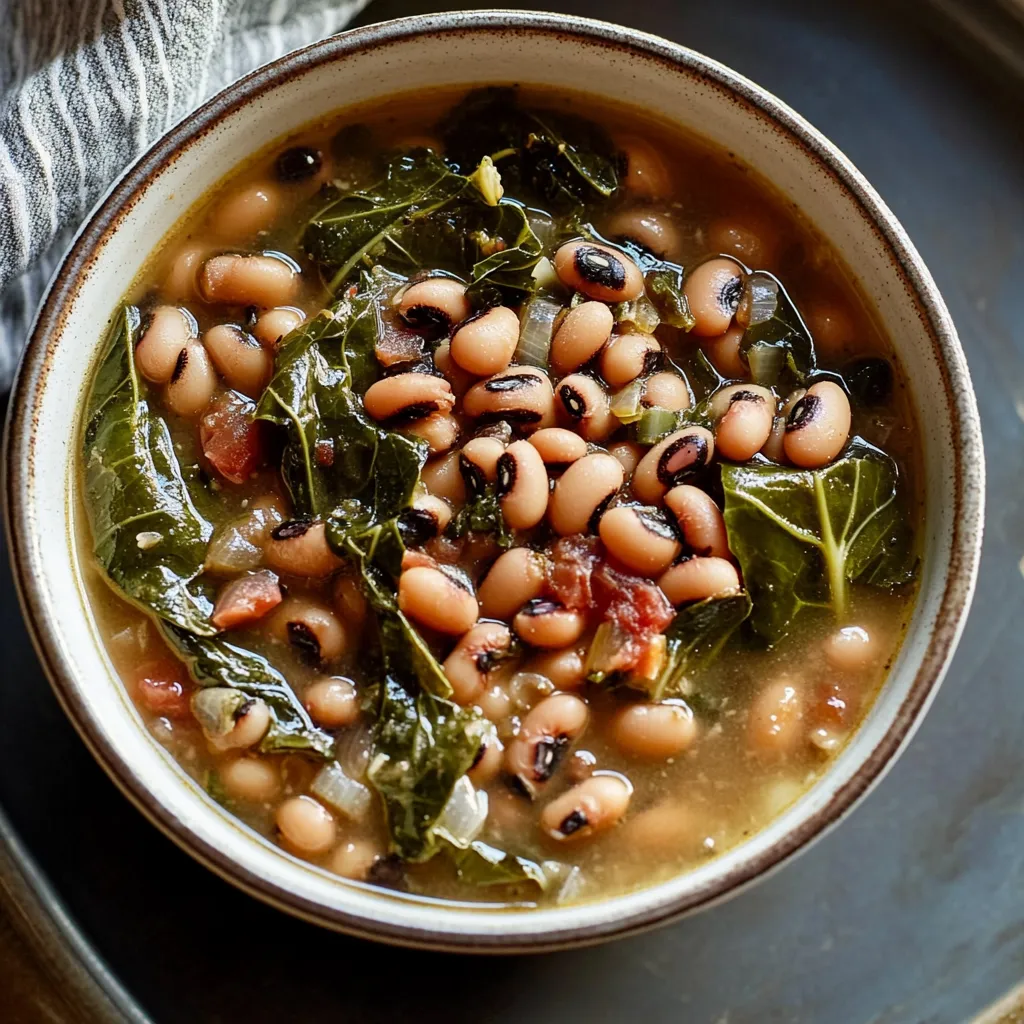 Pin it
Pin it
Spicing It Up
The flavors get stronger as everything cooks down, so go easy on the seasonings at first. That ham bone adds a lot of saltiness on its own, and you can always add more spices toward the end. I've learned to wait until the last hour before adding any hot sauce or cayenne if I want some kick.
Leftovers Magic
This dish actually gets better after a day or two in the fridge as all the flavors mix together. I've found the leftovers make awesome Southern breakfast bowls with a runny egg on top, or you can turn them into soup by adding more broth and some fresh veggies. The wild rice stays nice and chewy even when you heat it up again.
Ways To Serve It
Most folks serve this in deep bowls with cornbread on the side, but I've found it's just as good over grilled polenta or next to some roasted sweet potatoes. When I'm having people over, I put out toppings like fresh chopped onions, tomatoes, different hot sauces, and herbs so everyone can fix their bowl just how they like it.
Prep Ahead Tricks
When life gets crazy around the holidays, I prep everything the night before. I store all the cut veggies in containers and measure out my spices ahead of time. That way, in the morning, it's super easy to throw it all together. I do wait to cut the collards until I'm ready to cook them, though - they stay fresher that way.
Making It Your Own
While the ham bone is traditional, I've made this for my vegetarian friends using smoked mushrooms and veggie broth, and it turned out great. The trick is getting that smoky flavor from things like smoked paprika or a tiny splash of liquid smoke. If you're cooking for someone who can't have gluten, double-check what's in your stock.
Different Takes Around The South
As I've traveled through the South, I've tasted so many versions of this dish. In Georgia, some cooks add a touch of sorghum for sweetness. Louisiana folks often start with the Trinity mix - onions, celery, and bell peppers. And I've met families in Mississippi who swear that adding okra in the last hour makes all the difference.
Tricks From The Pros
Don't throw away those collard stems - chop them up fine and cook them with the onions for extra texture. For more flavor, brown your onions and garlic in a pan before they go in the slow cooker. I also like to keep cooked black eyed peas in my freezer - they thaw beautifully and can really speed up this recipe.
This slow cooker take on a Southern favorite shows you don't have to sacrifice tradition for convenience. After years of making this dish, I've realized it's not just about what goes in the pot or how long it cooks - it's about the care and time you put into making food that brings everyone together. Whether it's New Year's Day or just Sunday dinner, these black eyed peas and collards carry on a tasty tradition while helping you create new memories around your table.
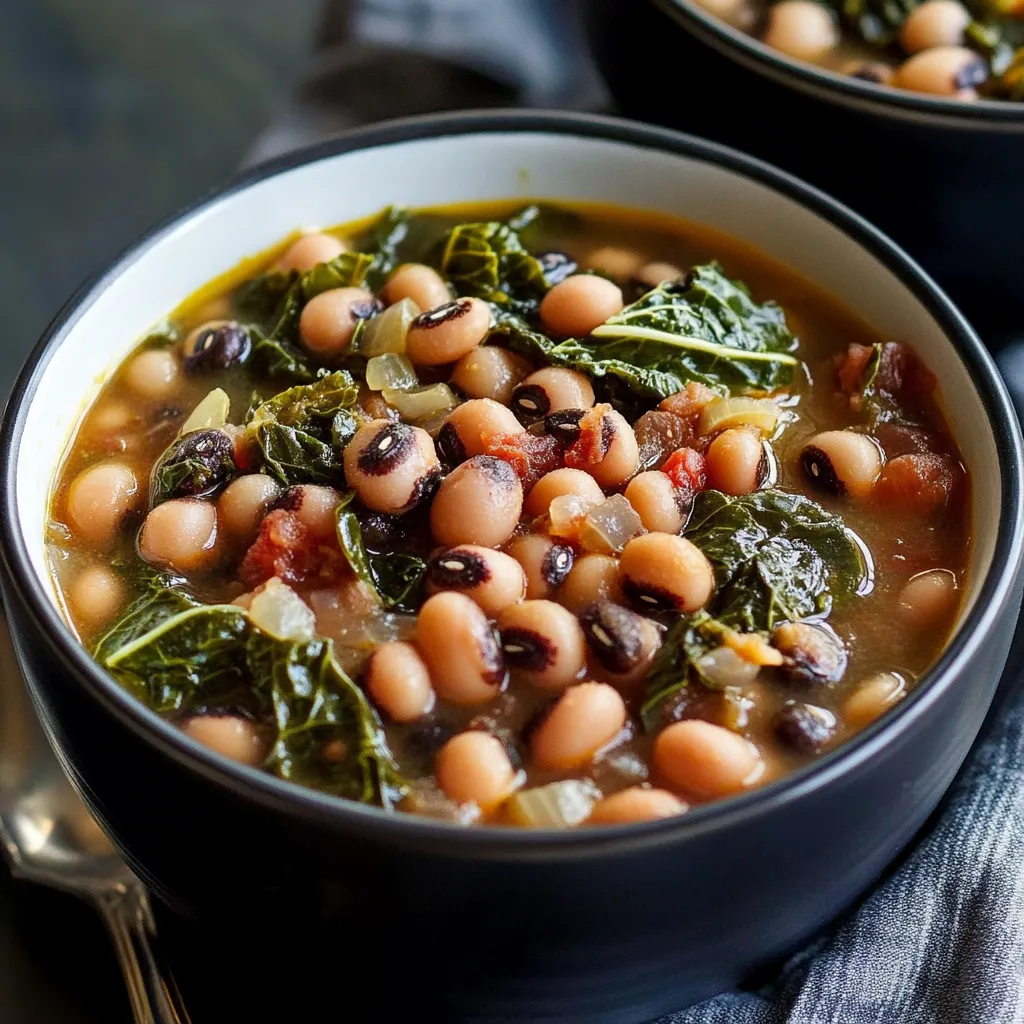 Pin it
Pin it
